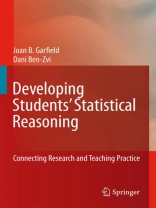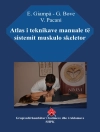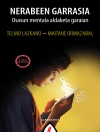Increased attention is being paid to the need for statistically educated citizens: statistics is now included in the K-12 mathematics curriculum, increasing numbers of students are taking courses in high school, and introductory statistics courses are required in college. However, increasing the amount of instruction is not sufficient to prepare statistically literate citizens. A major change is needed in how statistics is taught. To bring about this change, three dimensions of teacher knowledge need to be addressed: their knowledge of statistical content, their pedagogical knowledge, and their statistical-pedagogical knowledge, i.e., their specific knowledge about how to teach statistics. This book is written for mathematics and statistics educators and researchers. It summarizes the research and highlights the important concepts for teachers to emphasize, and shows the interrelationships among concepts. It makes specific suggestions regarding how to build classroom activities, integrate technological tools, and assess students’ learning.
This is a unique book. While providing a wealth of examples through lessons and data sets, it is also the best attempt by members of our profession to integrate suggestions from research findings with statistics concepts and pedagogy. The book’s message about the importance of listening to research is loud and clear, as is its message about alternative ways of teaching statistics. This book will impact instructors, giving them pause to consider: ‘Is what I’m doing now really the best thing for my students? What could I do better?’
J. Michael Shaughnessy, Professor, Dept of Mathematical Sciences, Portland State University, USA
This is a much-needed text for linking research and practice in teaching statistics. The authors have provided a comprehensive overview of the current state-of-the-art in statistics education research. The insights they have gleaned from theliterature should be tremendously helpful for those involved in teaching and researching introductory courses.
Randall E. Groth, Assistant Professor of Mathematics Education, Salisbury University, USA
表中的内容
The Foundations of Statistics Education.- The Discipline of Statistics Education.- Research on Teaching and Learning Statistics.- Creating a Statistical Reasoning Learning Environment.- Assessment in Statistics Education.- Using Technology to Improve Student Learning of Statistics.- From Research to Practice: Developing the~Big Ideas of Statistics.- Learning to Reason About Data.- Learning to Reason About Statistical Models and Modeling.- Learning to Reason About Distribution.- Learning to Reason About Center.- Learning to Reason About Variability.- Learning to Reason About Comparing Groups.- Learning to Reason About Samples and Sampling Distributions.- Learning to Reason About Statistical Inference.- Learning to Reason About Covariation.- Implementing Change Through Collaboration.- Collaboration in the Statistics Classroom.- Collaboration in Teaching and Research.












